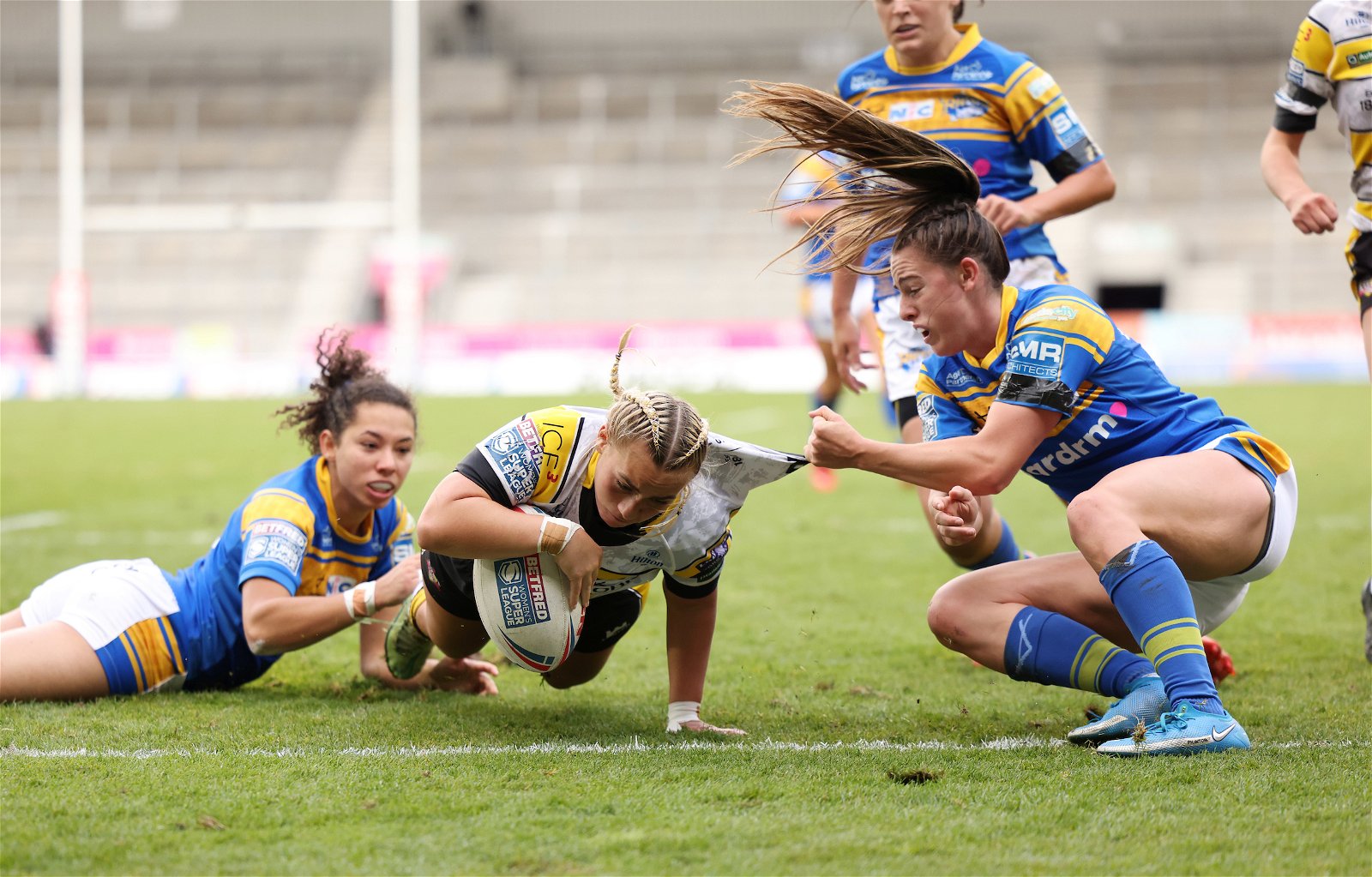
Women’s rugby league is a sport that is massively on the rise both in terms of the professional game, the amateur game and the passion and fandom for both.
The World Cup was a huge contributing factor and since then a second women’s Super League side, York Valkyrie, have announced that they will pay their players from 2023 onwards as they follow in the footsteps of Leeds Rhinos.
Both of those sides are set to face off in the opening game of the upcoming Super League season and it will be the last women’s Super League competition to feature just six teams with the RFL having announced that the league will expand to eight from 2024 onwards in what they view as step three of their plan.
Following the creation of the league in 2017 there was a desire to grow and develop and the so-called ‘maximising’ stage is slated to start from 2024 whereby there will be a whole new pyramid.
For that to happen the women’s Super League and Super League Two will just become an eight-team division on a large national scale, the Championship and four Super League teams who miss out will unite to form a ‘Regional’ tier and below that will be the ‘Local’ tier comprising amateur clubs.
Below the regional level will be local and amateur clubs and there will likely be plenty of those given that the RFL have cited a 214% growth in women’s and girls’ teams since the initiation of their three-step plan back in 2016.
In essence the six current Super League teams will remain as they are and be joined by two (one automatic and one playoff) Super League Two teams.
The remaining four Super League Two teams will combine with the 10 Championship clubs and some of the third-tier teams that are already designated by region (currently North, Midlands and South) to formulate a second tier comprising of four regions – the North, Roses, Midlands and the South.
The regions are defined as the North (West Cumbria, North East and Scotland), Roses (South Cumbria, Lancashire, Yorkshire, Humberside, Greater Manchester, Merseyside), Midlands (Derby, Nottingham, Birmingham, Coventry) and South (South Wales, Greater London, Home Counties).
Each team that tops their respective region enters the playoffs for a chance to earn promotion, provided they meet minimum standards, by playing the eighth-placed Super League side.
Below the regional tier is the local and amateur scale with undefined methods as yet on how promotion will work.
Thomas Brindle of the RFL commented: “Our longer term strategy and thinking we started in 2016 about levelling up the women’s and girls’ game. We started that strategy in 2017 and it was built over three phases. Phase one launched in 2017 with the likes of women’s Super League and using a branded competition to ultimately grow the whole of the game.
“Phase two which is where we currently are was what we termed as ‘broadcast ready’ which was a focus on off-field standards and making them better across the board.
“Phase three was what we ultimately see as the desired final structure was built on consistency, credibility and building the competitions with the aim to become semi-pro as and when the time was right.”




























